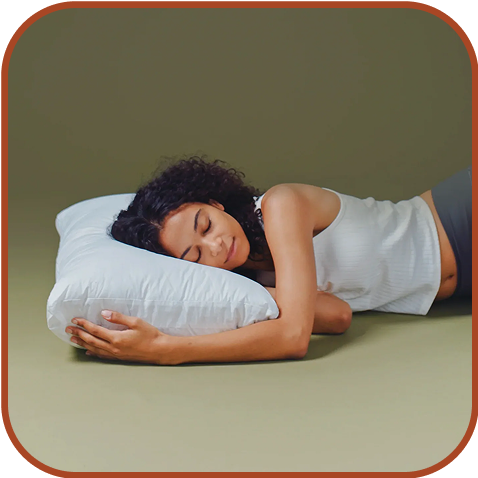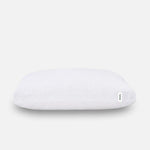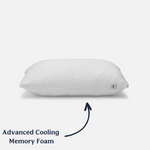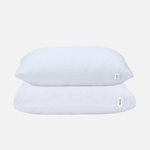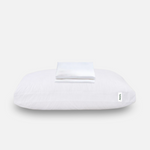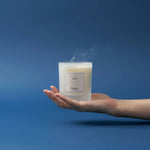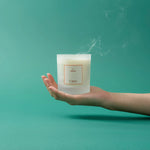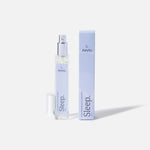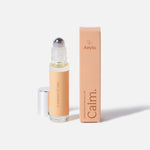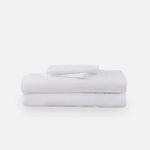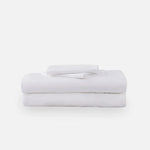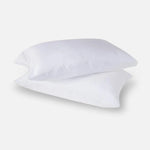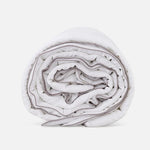Getting a better night’s sleep can be as simple as finding the best material for bedding. You need to select bedding that won’t make you too hot or too cold. And it can’t feel scratchy or uncomfortable if you’re trying to set the stage for a peaceful night of slumber.
Since picking fabric for bedding is so crucial, you need to make sure you get it right. Let’s look at what types of bed sheets are available and the upsides and downsides to each.
Cotton and Cotton Blend
Cotton has been used for more than 5,000 years. It’s in virtually everything - American dollar bills, clothes, and your bedsheets.
It’s a popular alternative for bedding material. And with good reason - there’s a lot to like about cotton sheets.
The Pros
- It’s readily available.
- It’s one of the best breathable sheets.
- It feels soft, not rough, against your skin.
- Cotton can be washed easily and put in a dryer.
- It’s highly sustainable.
- It’s long-lasting, holding up well to extended use.
- Cotton is great for sensitive skin.
The Cons
- Cotton sheets often shrink a bit.
- The fitted sheets don’t stretch well, which is a downer if you have a mattress topper.
- The colours often fade with repeated washes.
- Cotton can be affordable for bedsheets, but it can also be super pricey if you get a high thread count.

Egyptian Cotton
This type of high-quality cotton is made in Egypt. You can tell the difference between the types of cotton partially because Egyptian cotton carries a trademark logo to let you know it’s the real thing.
The Pros
- Feels silky and soft.
- More durable than normal cotton.
- It’s breathable.
- Doesn’t pill.
- It doesn’t shrink as much as regular cotton.
The Cons
- Pricier.
- Gets pretty wrinkly at times.
Bamboo
Newer to the world of sheets is bamboo. If you haven’t tried these yet, you might want to consider picking some up. Bamboo sheets may sound like they’d be uncomfortable and scratchy, but they aren’t at all.
It’s a great fabric to make sheets out of for a number of reasons.
The Pros
- Can be softer than cotton.
- Cool sheets for summer or hot sleepers because of how breathable they are.
- Hypoallergenic.
- They are sustainable and eco friendly because bamboo grows quickly.
- They hold up well, wash after wash.
- Great for those with dust mite allergies because they discourage moisture -- one of the things dust mites need to survive.
The Cons
- They can be expensive.
Tencel
If you’re not sure what Tencel is, it’s a trademarked name. The fabric is made from eucalyptus trees.
This brand of fabric is another exceptional choice for those who are looking for environmentally responsible, comfortable sheets. It’s becoming an increasingly popular sheet fabric with sustainability-loving consumers because of how fast Eucalyptus can grow.
The Pros
- Sustainable.
- Comfortable and soft.
- They have a silky feeling to them.
- The sheets can keep you feeling cool in the summer and warm in the winter.
- Great for sensitive skin.
- Doesn’t wrinkle easily.
- A good pick if you want moisture-wicking sheets.
- They are cool to the touch.
The Cons
- They are pricier than some other options.
- They are harder to find than more ordinary materials like cotton.

Linen
Some people love the crisp, clean look of linen. And it is a fabric that has stood the test of time. Many ancient civilisations, including Egypt, used linen, which is made out of flax.
The Pros
- It’s an anti-bacterial fabric.
- Linen sheets are hypoallergenic, which is good news for allergy sufferers.
- The fabric is highly breathable.
- It does feel warm in the winter.
The Cons
- It can get expensive when you go for a higher thread count to get a luxurious feel.
- Linen gets softer the more you use it. Until you break it in, it won’t feel as comfortable as you’d like.
- Linen is notorious for wrinkling easily.
- The fabric can be prone to lint.
Flannel
When you want warm sheets on a cold winter’s day, you might find yourself longing for flannel sheets. When used with a weighted blanket, they can warm you up instantly and give you that snug and secure feeling.
The Pros
- Flannel sheets are super soft.
- They are very warm.
- They don’t have special care instructions -- you can wash them and dry them without fear of damage.
- They have many adorable designs and patterns.
- Very affordable.
The Cons
- They can feel too warm and heavy for summer.
- They are prone to a bit of shrinkage.
- The colours can bleed onto other fabrics, so you should always wash them separately.
- They can pill after regular washing and use.
Polyester
If you don’t mind sacrificing some comfort to save a few dollars, you might want to check out polyester sheets. Polyester is a synthetic polymer, which can be off-putting for people who want to sleep on all-natural sheets.
The Pros
- They are a cheaper option than many other sheets.
- Durable.
- They don’t fade easily.
- They are resistant to wrinkling.
The Cons
- Polyester isn’t an all-natural fibre.
- They can really build up static, especially in the winter.
- They aren’t a good choice for people with sensitive skin.
- They are one of the least breathable types of sheets you can get, which leads to night sweats.

Microfiber
Microfiber is a thin synthetic yarn that is tightly woven. The diameter of the thread is actually smaller than the diameter of silk strands.
But is it the best bedding material? Let’s look at the upsides and downsides to using this kind of sheet.
The Pros
- You can use higher heat to wash them than you can with all-natural fabrics.
- They come in a lot of colours and designs.
- They are very affordable.
- They are durable.
- Microfiber is fairly soft.
The Cons
- It’s a thinner fabric that doesn’t have a luxury feel, as Egyptian cotton does.
- Hair, fuzz, and lint seem to cling to the fabric, which can make dark sheets look dirty.
- Not an all-natural fabric.
- More flammable than other sheets.
Silk
People tend to equate silk with luxury. It’s enjoyed this reputation for a long time - silk was used thousands of years ago in China. And even today, China produces more silk than any other country.
The Pros
- If you’re trying to impress people with the quality of your sheets, silk will do it.
- Hypoallergenic - they resist dust mites and moulds.
- They are decent at wicking the moisture from your skin.
The Cons
- Expensive.
- The slippery texture might not be enjoyed by everyone.
- They aren’t very durable.
- They require special care instructions.
Anything Else to Consider?
Before you buy sheets made out of a fabric you’ve never used, you may want to feel them first. That’s particularly true if you’re considering silk sheets, which can have a slippery feeling that not everybody loves, or if you’re going for polyester, which can irritate the skin.
Sheets can be a significant investment, so it’s good to know the ones you’re picking will work well for you.
Before you buy your next set of sheets, think about what seasons you’ll be using them in, and if you have any allergies, you should consider when making a purchase.
This Cheat Sheet Should Help You
Having the right sheets can help you feel good about yourself and your life as you close your eyes to dream. A great night of sleep is worth the investment you’re making, and it will be hard to go back to subpar sheets after you’ve had a few nights with ones that are well suited for you.
